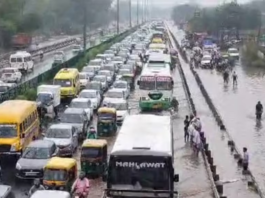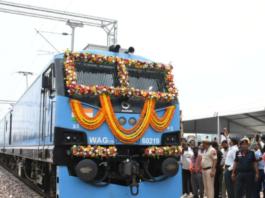
After the deadly clashes in the Galwan Valley, more than 68,000 Indian Army personnel, 90 tanks, and other weapon systems were airlifted to eastern Ladakh by the Indian Air Force (IAF) for quick deployment along the Line of Actual Control (LAC), according to top defence and security establishment officials.
In addition to placing several squadrons of combat aircraft in “offensive posturing” in the wake of the clashes on June 15, 2020, they claimed that the IAF also deployed its Su-30 MKI and Jaguar jets in the area for round-the-clock surveillance and intelligence gathering on the enemy build-up.
According to the officials, who also noted how the force’s strategic airlift capability has grown over time, the troops and weapons were transported by the IAF’s transport fleet in a “very short period of time” for quick deployment in a number of hostile areas along the LAC.
They added that the IAF has also stationed a sizable number of remotely piloted aircraft (RPAs) in the area to keep a close eye on Chinese activities in light of the growing tensions.
According to them, the Indian Air Force planes transported several divisions of the Indian Army, totaling more than 68,000 soldiers, as well as more than 90 tanks, close to 330 BMP infantry combat vehicles, radar systems, artillery cannons, and a variety of other equipment.
The IAF’s transport fleet, which includes C-130J Super Hercules and C-17 Globemaster planes, was able to carry a total of 9,000 tonnes of cargo, demonstrating the IAF’s expanding strategic airlift capabilities, they continued.
Following the fighting, a large number of fighter jets, including Rafale and Mig-29 aircraft, were sent on combat air patrol, while a number of IAF helicopters were used to transfer prefabricated buildings, ammunition, and military equipment spare parts to outposts in the mountains.
According to the sources, the Su-30 MKI and Jaguar fighter jets’ observation range was approximately 50 km, and they made sure that Chinese forces’ positions and movements were precisely tracked.
They added that the IAF immediately improved its air defence capabilities and battle preparedness by transporting a variety of surface-to-air guided weapons to frontline bases along the LAC in the area and installing multiple radars.
According to the sources, India’s overarching policy was to enhance its military posture, keep forces that were credible, and keep an eye on the enemy’s build-up in order to deal with any eventuality successfully.
The IAF platforms operated in highly challenging conditions and achieved all of their mission objectives, according to a source who declined to provide more information.
According to a different source, the total operation showed how the IAF’s airlift capabilities had improved since “Operation Parakram.”
India began “Operation Parakram” in the wake of the terrorist attack on Parliament in December 2001, mobilising a sizable number of troops along the Line of Control (LoC).
Following the conflict in eastern Ladakh, the government has been heavily promoting infrastructural growth along the approximately 3,500 km long LAC.
Since the fighting in the Galwan Valley, the Army has also implemented a number of measures to improve its battle readiness. In mountainous areas along the LAC in Arunachal Pradesh, a sizable number of the easily transportable M-777 ultra-light howitzers have already been deployed.
The Indian Army now has the ability to swiftly move the M-777 from one location to another according on operational requirements since it can be transported in Chinook helicopters.
Additionally, the Indian Army has supplied its soldiers in Arunachal Pradesh with a sizable number of all-terrain vehicles made in the US, 7.62mm Israeli Negev Light Machine Guns, and other deadly weapons.
Even though the two sides completed the disengagement from various regions after protracted diplomatic and military talks, the Indian and Chinese troops are still engaged in a more than three-year-old conflict in some flashpoints in eastern Ladakh.
Following the violent altercation in the Galwan Valley, relations between India and China dramatically deteriorated.
There are presently 50,000–60,000 soldiers on either side along the LAC in the area.
On Monday, there will be a new round of high-level military negotiations between the two parties.
India is to push for quick troop withdrawal from the remaining hot spots during the conversation.
National Security Adviser (NSA) Ajit Doval and Wang Yi, the senior diplomat of China, met on July 24 in Johannesburg at a BRICS summit.
Following a bloody altercation near Pangong Lake on May 5, 2020, the eastern Ladakh border standoff broke out.



